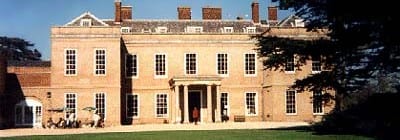
During the 1770s Powlett Wright made many changes to Englefield. He added a neo-Classical frieze featuring a repeating lotus and anthemion pattern (which originated in…

Englefield’s imposing structure stands within rolling grounds near the village of Englefield in Berkshire, on the site of an earlier house, which belonged to the…

When W. Fletcher and Edmund J. Niemann toured Reading in the 1830s they noticed a ‘splendid mansion’ which was ‘seated on the declivity of a…

Warfield Park, Berkshire Longing, Belonging and the Country House by Kate Smith Please note that this case study was first published on blogs.ucl.ac.uk/eicah in April…

Englefield House, Berkshire Processes and Practices by Kate Smith Please note that this case study was first published on blogs.ucl.ac.uk/eicah in March 2013. It…

The fortune brought back from India by Francis Sykes was reckoned by his contemporaries to be one of the largest, indeed second only to that…

The East India Company relied on dense networks of kinship, patronage and sociability to maintain its monopolistic control over Asian trade. Charles Raymond had married…

Henry Russell moved his family to Reading and then to Brighton while extensive renovations were undertaken at Swallowfield between 1824 and 1826. The long-suffering Charles, unsurprisingly, stepped in to supervise in Henry’s absence, as he had done at the Hyderabad Residency. Although Sir Henry Russell received rents from Swallowfield and was an occasional guest there, it was Henry and Clotilde Russell – together with their six surviving children – who made this house their home. Charles, who served as a Tory MP for Reading for many years, was a constant visitor, and continued to work in harness with Henry to made Swallowfield a venerable English family seat.

Swallowfield Park began life as a Tudor mansion, but in 1689-91 Henry Hyde, second Earl of Clarendon employed architect William Talman to transform it. In…

The Russell family purchased Swallowfield Park in the mid 1820s. By 1826 they had begun to renovate the house. This section gives an overview of…


Recent posts